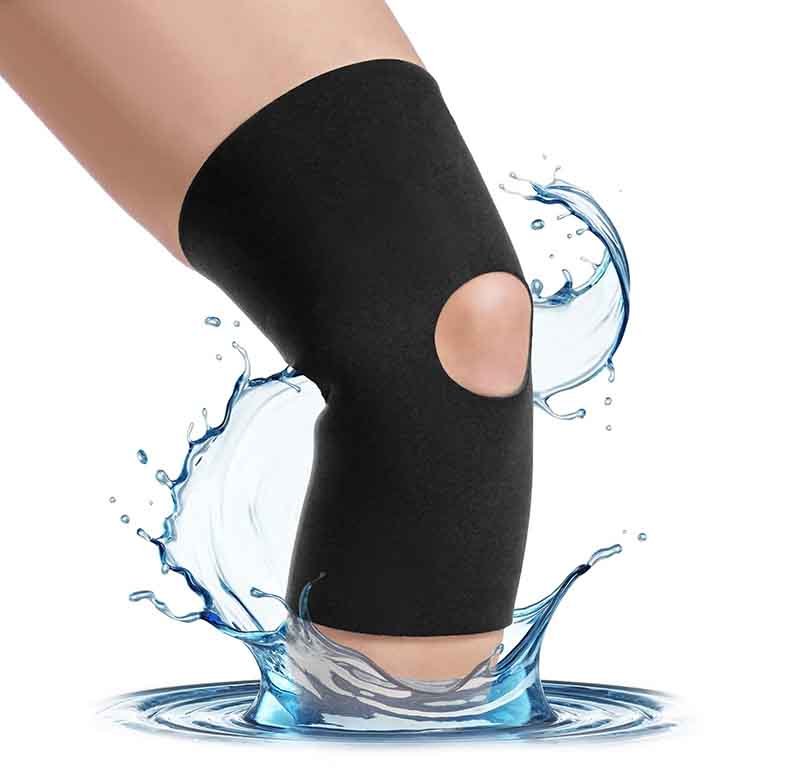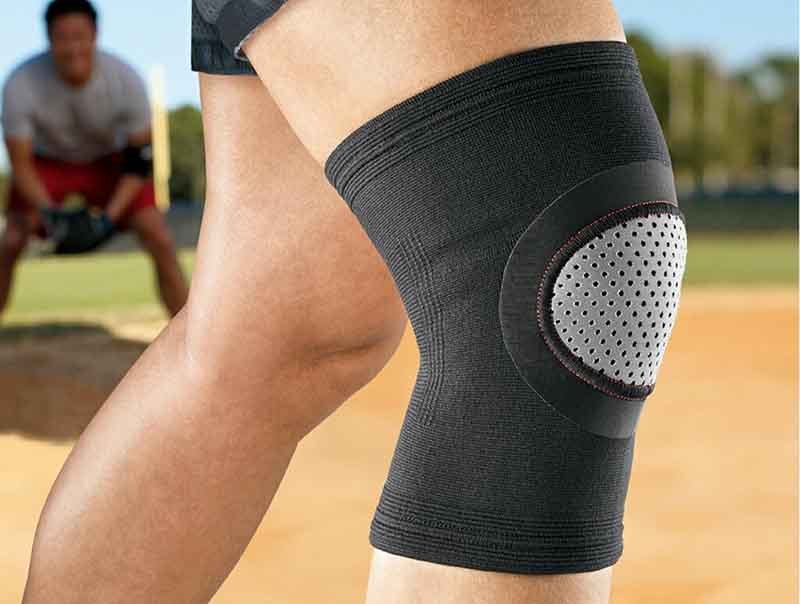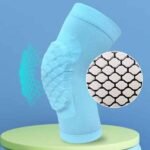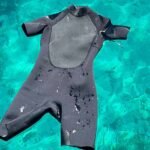Knee pain is no longer just a concern for the elderly. From elite athletes to office workers, more people are turning to knee braces to protect their joints, recover from injury, or simply add support during daily activities. Among all available options, neoprene knee braces stand out for their comfort, flexibility, and versatility. But with so many types and manufacturers in the market, how do you choose the right one—especially if you’re sourcing for your own brand or retail line?
Neoprene knee braces provide compression, support, and warmth, making them ideal for injury recovery, sports use, and daily joint care. They are versatile, affordable, and available in a variety of designs to suit different customer needs and medical conditions.
What Is a Neoprene Knee Brace and How Does It Work?

A neoprene knee brace is a supportive device made from synthetic rubber that helps stabilize the knee, reduce pain, and promote recovery by providing compression and warmth to the joint.
The Mechanics Behind Neoprene Knee Braces
What Is a Knee Brace?
A knee brace is a wearable support used to protect a knee that’s injured, weakened, or under strain. It can help:
- Prevent injuries during sports or intense physical activity
- Aid recovery from surgery or trauma
- Reduce pain from chronic conditions like arthritis
Why Neoprene?
- Elasticity and compression
- Thermal insulation
- Moisture resistance
Neoprene vs Fabric/Elastic Knee Braces
| Feature | Neoprene Brace | Fabric/Elastic Brace |
|---|---|---|
| Compression | High | Moderate |
| Warmth Retention | Excellent | Low |
| Breathability | Moderate (perforated) | High |
| Use Case | Sports & recovery | Light support |
| Durability | High | Varies |
Are Neoprene Knee Braces Good?

Yes, neoprene knee braces are excellent for moderate to heavy support needs due to their durable, flexible, and compression-friendly material.
When Are Neoprene Braces the Right Choice?
Advantages
- Great for joint warmth
- Stable and supportive
- Highly customizable
- Durable for sports use
Limitations
- Can trap heat
- Less breathable
- May require frequent cleaning
Ideal Users
- Post-surgery patients
- Arthritis sufferers
- Runners, lifters
- Fitness and wellness brands
What Is the Best Material for a Knee Brace?

The best material for a knee brace depends on the user’s specific needs, but neoprene is widely regarded as the top choice for compression, support, and durability.
Material Comparisons and Suitability
| Material | Benefits | Best For |
|---|---|---|
| Neoprene | Compression, warmth, flexibility | Sports, recovery, arthritis |
| Elastic/Nylon | Lightweight, breathable | Daily wear |
| Polyester | Cost-effective, stable | General support |
| Hinges | Reinforced protection | Post-surgery, ligament damage |
What Is the Difference Between a Knee Brace and a Neoprene Knee Sleeve?
- Brace: Structured, adjustable support for serious injuries
- Sleeve: Light compression, easy-wear for prevention or light pain
What Are the 3 Different Types of Knee Braces?
The three main types of knee braces are prophylactic, functional, and rehabilitative braces. Each type is designed to address different support needs—ranging from injury prevention to post-surgical recovery.
1. Prophylactic Knee Braces (Injury Prevention)
Prophylactic braces are designed to prevent knee injuries, especially in high-impact sports such as football, skiing, basketball, or motocross.
- Structure: Typically made from neoprene or nylon with light hinges or padded lateral bars.
- Use Case: Worn by healthy athletes to avoid ligament damage during dynamic movements.
- Who It’s For: Competitive athletes, teens in sports programs, and those returning to physical activity after recovery.
- Common Features:
- Side stabilizers
- Open-patella for ventilation
- Flexible straps for mild compression
Example: A football player wears a prophylactic knee brace to reduce the risk of MCL strain when changing directions quickly.
2. Functional Knee Braces (Post-Injury Support)
Functional braces are used after an injury to provide support and prevent re-injury. They are the most widely used type in both sports medicine and physical therapy.
- Structure: Hinges, straps, and sometimes rigid frames offer controlled movement.
- Use Case: Offers targeted support to injured ligaments (ACL, PCL, MCL, LCL).
- Who It’s For: Individuals recovering from a torn ligament, sprain, or minor fracture.
- Common Features:
- Medial and lateral support
- Adjustable compression zones
- Often prescribed for mid-stage rehabilitation
Example: After an ACL tear, a basketball player wears a functional knee brace during training sessions to avoid re-injury.
3. Rehabilitative Knee Braces (Post-Surgical or Severe Injury Recovery)
Rehabilitative braces are used in the early phase of recovery, particularly following surgery or a major injury. Their main function is to restrict movement and protect the healing process.
- Structure: Rigid frames with locking hinges and extensive padding.
- Use Case: Limits range of motion during healing and protects surgical sites.
- Who It’s For: Post-operative patients, or those with severe trauma requiring immobilization.
- Common Features:
- Lockable hinge systems (e.g., to 0°, 30°, 60°, etc.)
- Full-leg design (sometimes thigh-to-shin)
- Foam padding for comfort and immobilization
Example: A post-ACL reconstruction patient uses a rehabilitative brace locked at 30° to gradually regain mobility while preventing overextension.
Summary Comparison Table
| Type | Primary Function | Flexibility | Common Users | Example Use Case |
|---|---|---|---|---|
| Prophylactic | Injury prevention | High | Athletes | Avoid MCL strain in contact sports |
| Functional | Support after injury | Moderate | Recovery patients | Stabilize torn ACL during rehab |
| Rehabilitative | Movement control post-op | Low | Post-surgical patients | Immobilize knee after ligament repair |
Why This Matters for Buyers and Brands
Understanding the type of knee brace your customers need is essential for:
- Product positioning: Fitness brands may focus on prophylactic or functional types.
- Retail segmentation: Medical retailers often stock rehabilitative braces with prescriptions.
- Custom manufacturing: Knowing the purpose informs neoprene thickness, hinge requirements, and packaging instructions.
What Are the Best Neoprene Knee Braces?

The best neoprene knee braces offer a balance of support, comfort, and durability, and are tailored to specific use cases such as sports, post-surgery, or arthritis relief.
Top Features That Define a High-Performance Neoprene Knee Brace
To help you or your brand select the most suitable options, here’s what to look for in a best-in-class neoprene knee brace:
1. Medical-Grade Neoprene
- Provides optimal compression and thermal insulation
- Soft-touch inner lining for long-term wear
- Hypoallergenic and latex-free for sensitive skin
2. Targeted Support Design
- Open-patella design to reduce kneecap pressure
- Closed-patella for full-surface compression
- Reinforced hinges for post-injury and sports recovery
- Optional gel pads for shock absorption
3. Secure Fit and Anti-Slip Features
- Dual or triple adjustable Velcro straps
- Silicone grip strips to prevent slipping during motion
- 3D ergonomic stitching that adapts to knee curvature
4. Customization Potential for Brands
- Printable outer neoprene layer for private label logo
- Customizable color options, sizing, and packaging
- Thickness variations from 3mm to 7mm
Best-Use Scenarios and Matching Brace Types
| Use Case | Recommended Brace Type |
|---|---|
| Running or gym use | Open-patella, 5mm neoprene sleeve |
| Post-surgery recovery | Hinged brace, closed-patella, 7mm neoprene |
| Arthritis relief | Closed-patella with gel support, 5mm neoprene |
| Weightlifting | Thick compression brace with anti-slip grip |
| Elderly daily use | Lightweight 3mm neoprene sleeve |
Quick Checklist: How to Identify the Best Brace
- Does it meet FDA/CE/ISO standards?
- Is the neoprene breathable and odor-resistant?
- Are the stitches reinforced and materials non-toxic?
- Can it be customized with your brand logo and packaging?
- Does it provide value for price based on features?
Which Types of Neoprene Knee Braces Are Best for Different Conditions?
Open-patella, hinged, and compression-style neoprene braces each address specific conditions like post-surgery recovery, arthritis, or sports use.
Open-Patella vs Closed-Patella
- Open: Supports patella alignment, cooler
- Closed: Full compression, warmer
Hinged vs Non-Hinged
| Feature | Hinged Brace | Sleeve-Style Brace |
|---|---|---|
| Structure | Includes side hinges | Flexible neoprene |
| Best For | Surgery rehab | Mild support and warmth |
Condition-Based Recommendations
| Condition | Recommended Type |
|---|---|
| ACL Injury | Hinged brace |
| Arthritis | Closed-patella sleeve |
| Post-surgery | Hinged with adjustable straps |
| Light strain/swelling | Open-patella sleeve |
How to Choose the Right Neoprene Knee Brace for Your Customers?

Choosing the right neoprene knee brace requires understanding your customers’ condition, activity level, fit preference, and support needs.
Fit and Sizing
- Offer multiple sizes
- Include measurement charts
- Provide adjustable options
Compression and Support Grades
| Grade | Thickness | Ideal For |
|---|---|---|
| Light | 3mm | Daily wear, warming effect |
| Medium | 5mm | Workouts, minor recovery |
| High | 7mm | Post-surgical rehab |
Design Preferences
- Sleeves: Easy to wear
- Straps: Adjustable and secure
- Athletes: Require silicone anti-slip bands
What Are the Key Features of a High-Quality Neoprene Knee Brace?
High-quality neoprene knee braces offer sweat resistance, skin-safe materials, solid stitching, and reliable grip.
- Perforated neoprene for breathability
- Silicone grip bands for anti-slip performance
- Industrial Velcro that withstands frequent use
- Reinforced stitching and durable seams
- Custom branding available with logo print and private label packaging
Are Neoprene Knee Braces Suitable for Sports and Everyday Use?

Yes, neoprene knee braces are ideal for both sports performance and daily joint support thanks to their flexibility, compression, and ergonomic design.
Use Scenarios
- Running – Open-patella, thin neoprene
- Weightlifting – High compression (5mm–7mm)
- Basketball – Hinged braces
- Everyday use – Light, sleeve-type braces
Comparison with Rigid Braces
| Factor | Neoprene Brace | Rigid Brace |
|---|---|---|
| Flexibility | High | Low |
| Comfort | Excellent | Often restrictive |
| Use Case | Dynamic activities | Stabilization required |
What Are the Common Manufacturing Standards and Certifications for Knee Braces?
Knee braces intended for medical or retail use should meet CE, FDA, or ISO standards, and use materials that pass SGS or REACH safety testing.
- CE: EU market access
- FDA: US healthcare product compliance
- ISO 13485: Medical device manufacturing
- SGS & REACH: Safe materials for skin contact
| Region | Required Certifications |
|---|---|
| USA | FDA, SGS |
| EU | CE, REACH |
| Global Retail | ISO, safety declarations |
Where to Source Custom Neoprene Knee Braces in Bulk?
Look for an experienced neoprene product factory that offers design customization, low MOQ, certified quality, and OEM/ODM services.
Key Qualities
- Design customization
- OEM/ODM capabilities
- CE/FDA/SGS certifications
- Competitive MOQ and fast lead time
Why Choose Szoneier
- 18+ years of neoprene manufacturing
- 100% quality assurance
- Free samples, fast prototyping
- Custom logo printing and packaging
- Support for global private label clients
Contact Szoneier for a free sample or bulk quote today.
How Do You Maintain and Clean Neoprene Knee Braces for Longevity?
To maintain your neoprene knee brace, hand-wash it in mild detergent, air-dry in a shaded area, and store it flat to retain shape and elasticity.
Cleaning
- Hand wash with cold water
- Use mild detergent
- Avoid bleach or fabric softeners
Drying
- Air dry only
- Keep away from direct heat or sunlight
Storage
- Store flat or lightly rolled
- Keep in a dry, ventilated space
- Use anti-odor inserts for long-term storage
Conclusion: Source Smart, Support Strong – Partner with Szoneier
Neoprene knee braces are a go-to solution for injury recovery, joint support, and active lifestyles. Choosing the right design, material, and manufacturer is critical to ensuring product performance and customer satisfaction.
Whether you’re a fitness brand, medical wholesaler, or online seller, Szoneier is ready to help you launch or scale your knee brace product line with quality, customization, and confidence.
Contact us today to request samples or get started on your private label neoprene knee brace project.











